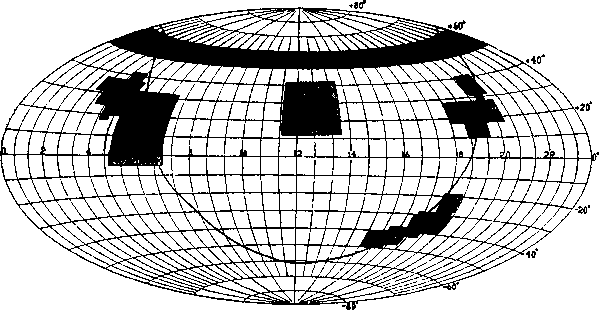64 Sidereal Explorations
not get us very far into space. Eighth magnitude stars of
Class A are, on the average, less than a thousand light years
distant. In fact, a large majority of the stars of the statis-
tically complete part of the catalogue are within twelve
hundred light years of the Sun.
Before the catalogue was entirely published, with its
valuable spectral information for the regions most com-

Figure 4. Regions covered by the Henry Draper Extension. Cross-hatch in-
dicates Classihcations already published. Equatorial system of coordinates,
with galactic circle superposed.
monly explored by astronomers, the studies of globular star
clusters and faint variables had shown the importance of
getting deeper into space, even in the analysis of the local
system. An extension to the Henry Draper Catalogue was
suggested, to be based on new photographs showing spectra
of fainter stars and involving new determinations of ap-
parent magnitudes. Miss Cannon and her associates imme-
diately undertook the Henry Draper Extension, directing
attention mainly to the rich and important fields in low
galactic latitude (Milky Way regions). An Aitoff chart
of the sky is reproduced in Figure 4 showing the progress
More intriguing information
1. Picture recognition in animals and humans2. Female Empowerment: Impact of a Commitment Savings Product in the Philippines
3. Density Estimation and Combination under Model Ambiguity
4. The name is absent
5. The name is absent
6. Importing Feminist Criticism
7. Environmental Regulation, Market Power and Price Discrimination in the Agricultural Chemical Industry
8. Text of a letter
9. CROSS-COMMODITY PERSPECTIVE ON CONTRACTING: EVIDENCE FROM MISSISSIPPI
10. European Integration: Some stylised facts